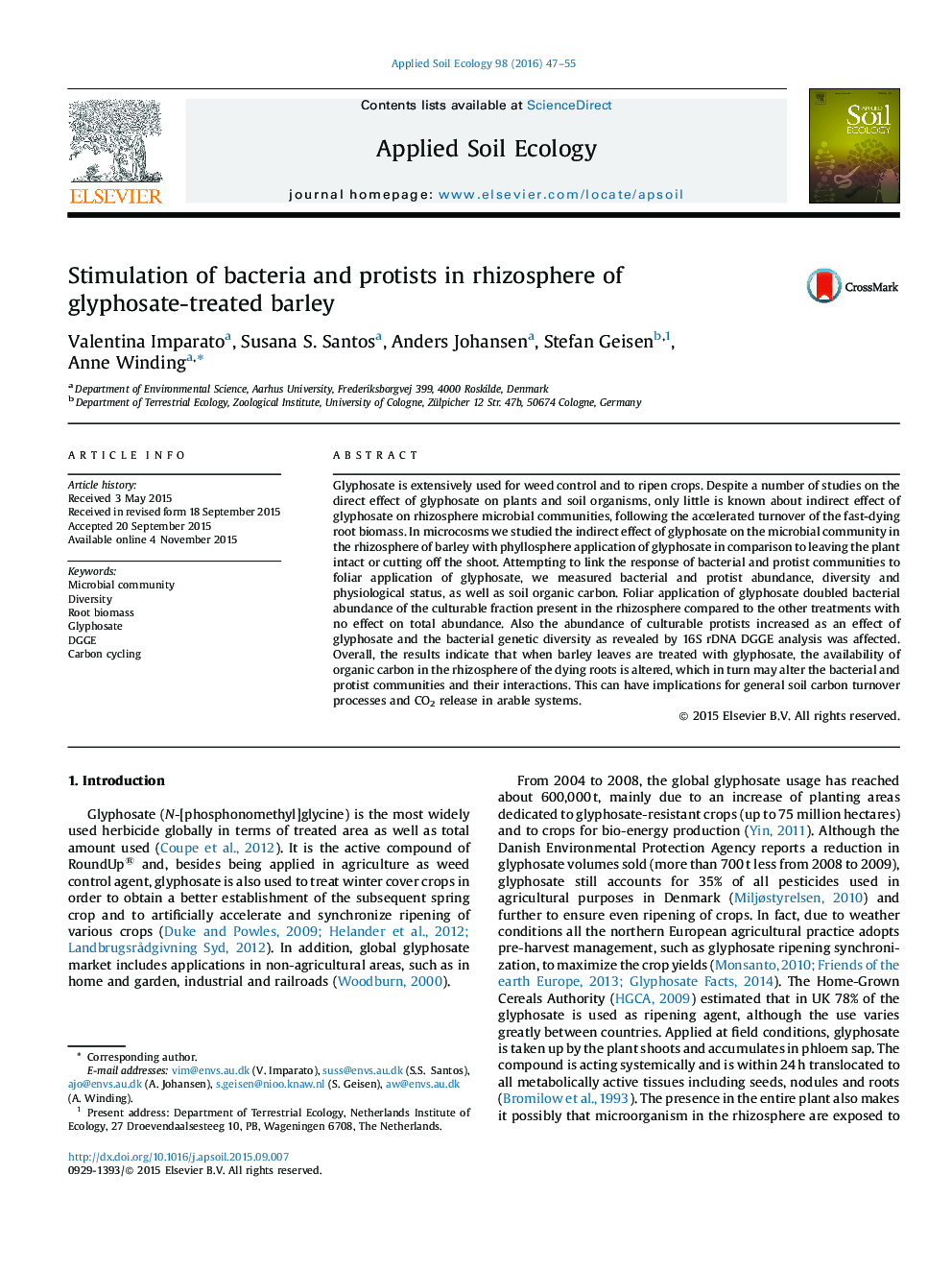| کد مقاله | کد نشریه | سال انتشار | مقاله انگلیسی | نسخه تمام متن |
|---|---|---|---|---|
| 4381856 | 1617785 | 2016 | 9 صفحه PDF | دانلود رایگان |
• We studied phyllosphere application of glyphosate on barley rhizosphere.
• Application of glyphosate caused an increased turn-over of the root system.
• Application of glyphosate stimulated bacteria and protists abundance.
• Application of glyphosate modified bacterial community profiles.
• Glyphosate on sensitive plants increased culturability of bacteria and protists.
Glyphosate is extensively used for weed control and to ripen crops. Despite a number of studies on the direct effect of glyphosate on plants and soil organisms, only little is known about indirect effect of glyphosate on rhizosphere microbial communities, following the accelerated turnover of the fast-dying root biomass. In microcosms we studied the indirect effect of glyphosate on the microbial community in the rhizosphere of barley with phyllosphere application of glyphosate in comparison to leaving the plant intact or cutting off the shoot. Attempting to link the response of bacterial and protist communities to foliar application of glyphosate, we measured bacterial and protist abundance, diversity and physiological status, as well as soil organic carbon. Foliar application of glyphosate doubled bacterial abundance of the culturable fraction present in the rhizosphere compared to the other treatments with no effect on total abundance. Also the abundance of culturable protists increased as an effect of glyphosate and the bacterial genetic diversity as revealed by 16S rDNA DGGE analysis was affected. Overall, the results indicate that when barley leaves are treated with glyphosate, the availability of organic carbon in the rhizosphere of the dying roots is altered, which in turn may alter the bacterial and protist communities and their interactions. This can have implications for general soil carbon turnover processes and CO2 release in arable systems.
Journal: Applied Soil Ecology - Volume 98, February 2016, Pages 47–55
